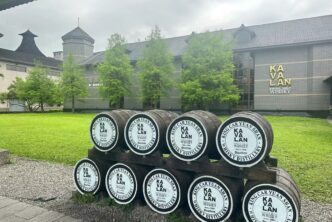Since François, the ancestor of Michel de la Pière, settled in the town of Auvers, on the Côte des Bar, in 1808, the estate has always been run by the Drappier family.
Today, the head of the family, André Drappier, is still on the front line, with Charline Drappier, the sales director, Hugo and Antoine in charge of the vinification and vineyards, and with younger members of newer generation (presently eighth generations and counting) who will soon be one day running the winery.
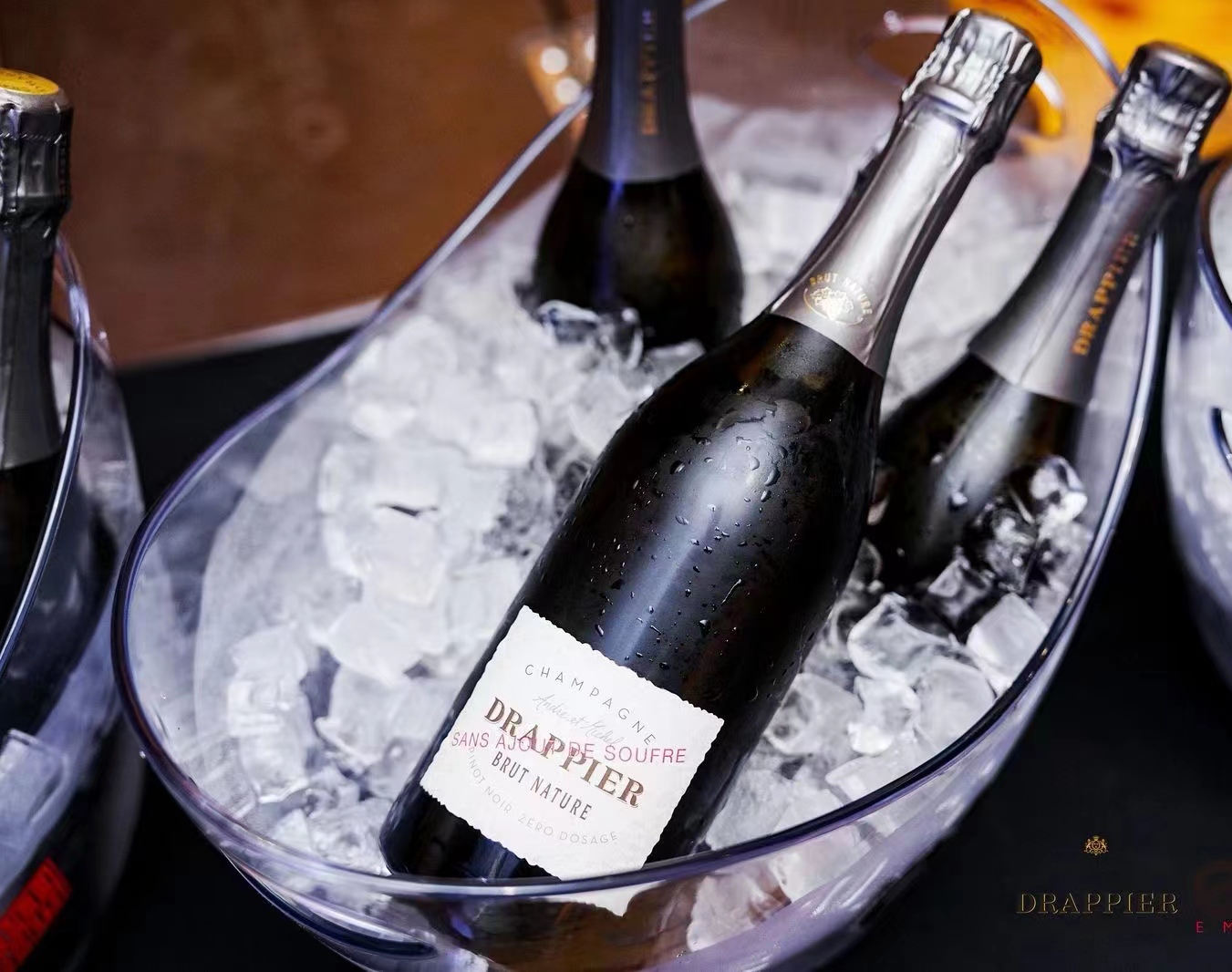
Where is Côte des Bar? Though it may not be as famous as other Champagne sub-regions like the Montagne de Reims and the Côte de Blancs, it is an excellent area in which to make Champagne, and it’s especially good for Pinot Noir. In fact, in recent years, the Côte des Bar has been attracting more and more attention. Most likely, this is because of a combination of factors, including the increasing price of Champagne, everybody’s need for more unique terroirs in which to make this great sparkling wine, and the global warming and greenhouse effect that allows Pinot Noir to ripen perfectly and make a big splash in Côte des Bar. Believe it or not, it’s the Pinot Noir from there that supplies 50% of the demand for the grape in the whole Champagne region.
A bit removed from Paris and the other Champagne sub-regions, the bucolic, beautiful Côte des Bar is located in the southernmost part of the Champagne region, bordering the Côte d’Or to the south. It is surrounded by the rivers Aube and Seine, with forests and oral grazing lands everywhere. On the left bank of the Aube River is the village of Urville, the highest wine-growing village in the Champagne region, and the home of the Drappier winery. In general, the soil of the Côte des Bar is predominantly of Kimmeridigian origin, with a stony topsoil of gravel, larger cobblestones, clay and marl, but there are also pockets of Portlandian origin. Undoubtedly, it is the chalky, Kimmeridigian soils of Bar-sur-Aube that give the grapes complex aromas and mineral notes, while the Portlandian soils tend to give a bit more body.
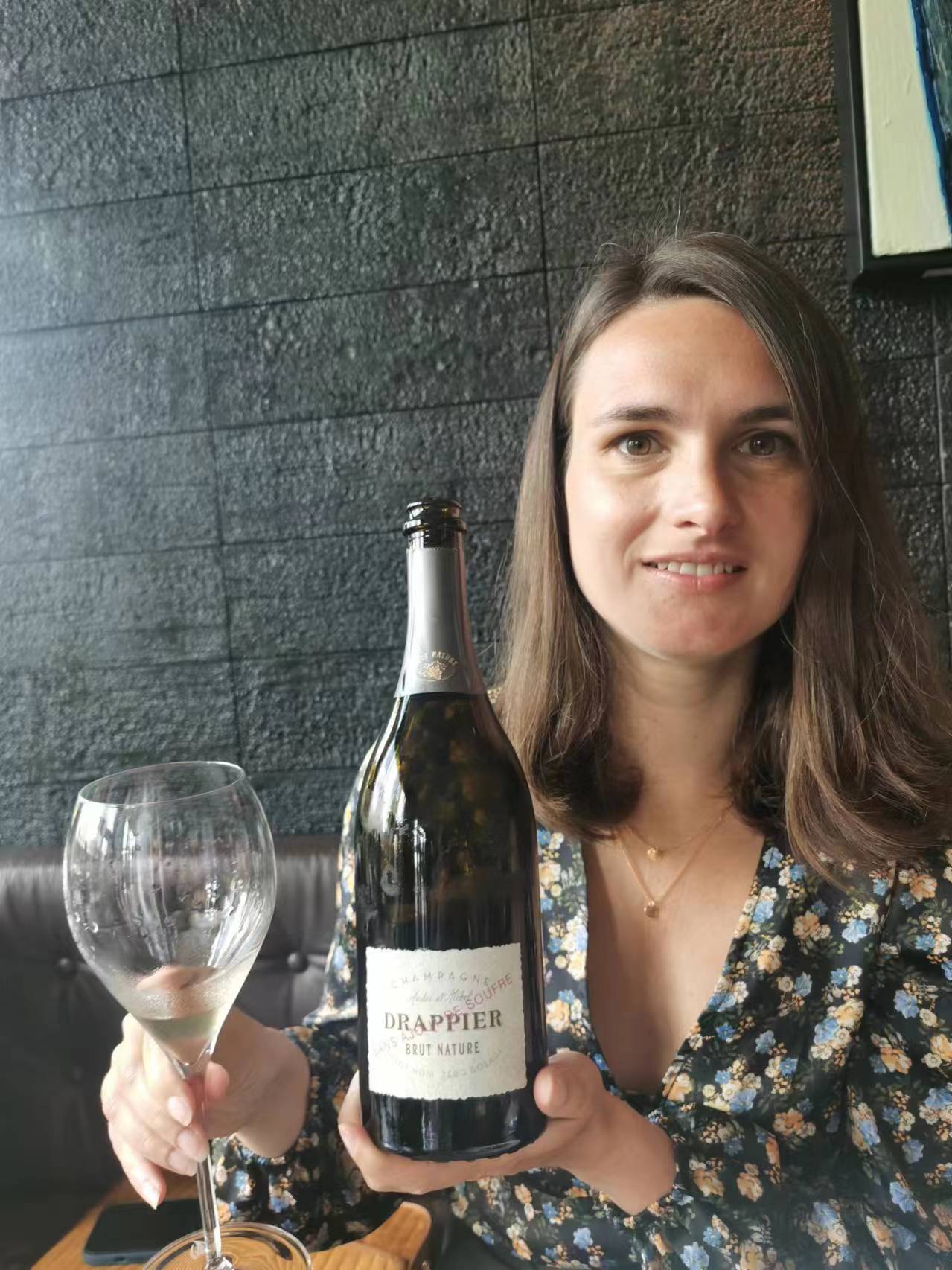
The Drappier reality: Vineyard
Today, the Drappier vineyard spans over seventy hectares, mainly planted around Urville. The family wanted to grow organic grapes, and so began by farming ten hectares of certified organic vines; today, it is fully certified, which is very rare in Champagne. The family also farms about fifty hectares of leased vineyards, mainly in the Auvers, which are also managed in an organic and natural way. Pinot Noir is the soul of Drappier, as this grape represents 70% of the winery’s plantings, supplemented by Pinot Meunier (15%), Chardonnay (9%). Interestingly, at Drappier they still grow Champagne’s old varieties Blanc Vrai (Pinot Blanc, but older vines have to be considered a local biotype of this variety altogether different from the stuff that gets planted from nurseries), Petit Meslier, Arbane and Fromenteau (again, the older vines of which are an ancestor of Pinot Gris; clearly, given that genetic studies somewhat glibly conclude that the two are one and the same thing, when you go looking for Fromenteau in a nursery they understandably give you Pinot Gris, and therein lies the importance of massal selections).
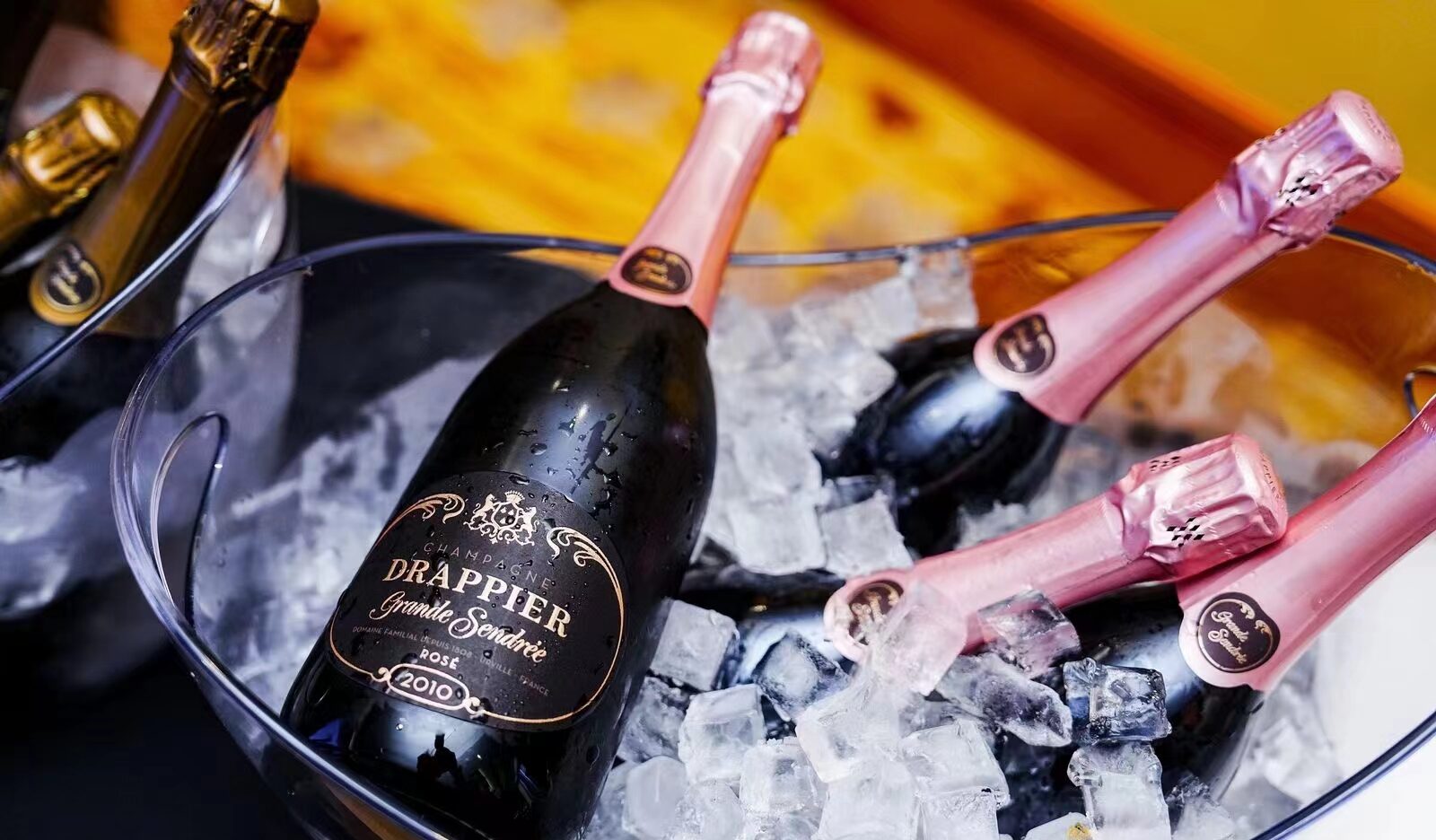
It is interesting to note that Michel Drappier’s commitment to the ecological preservation of his homeland, and his respect for nature, can be seen in his dedication to organic, carbon-neutral wines (in 2016, Drappier Champagne became the first low-carbon winery in Champagne). But also low sugar content, minimal addition of sulfur dioxide, and even a sulfur-free Champagne. However, at Drappier they are also willing to try new things and innovate. For example, in 2013 the family decided to submerge 3,000 bottles of their Champagne in Breton waters for 646 days, believing that submarine ageing would insulate the wine from the air, minimize the loss of gas and slow down the oxidation process, thus creating a wine that has aromatic complexity, but at the same time, remain vibrant and have more ageing potential.
The wines in this tasting report
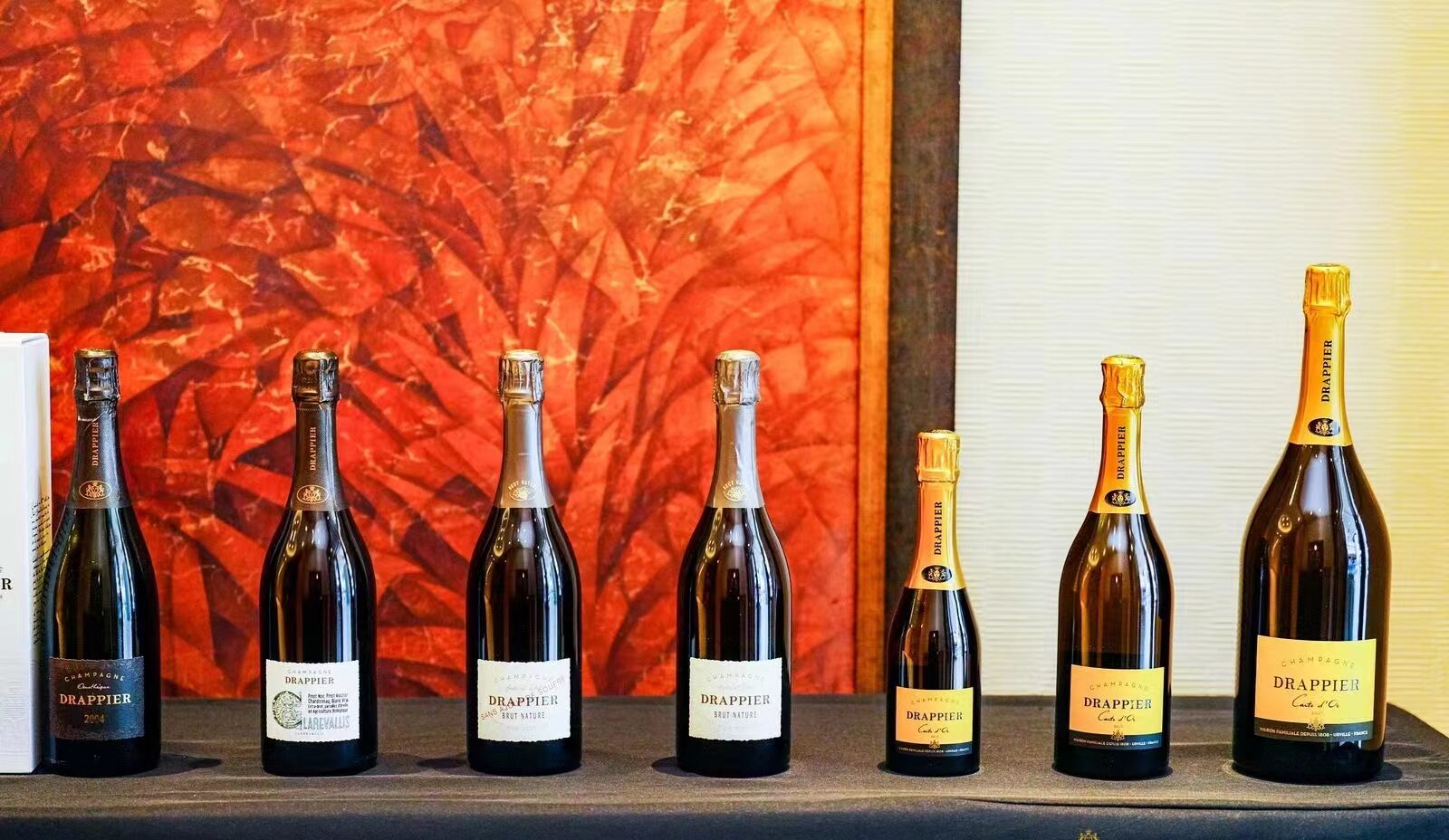
Drappier NV Champagne Carte d’Or Brut 91
Light yellow color. Intense aromas of fresh white and yellow peaches, balsamic oils, herbs, quince jelly and pear. About 40% reserve wines provide depth and complexity to the palate (the liqueurs go back to more than 20 years). The finish has a repeating hint of pear. Almost a Blanc de Noirs, this is mostly Pinot Noir wine (80%), with a little Chardonnay (15%) and Pinot Meunier (5%), about 5% is aged in oak casks and is then bottled with 6.5 g/L dosage. The recipe for this wine has not been adjusted since the Second World War. Drinking window:2024-2027.
Drappier NV Champagne Brut Nature Zero Dosage 90
Light yellow color with copper hues. Fresh aromas of wild berries and citrus fruits. On the palate there are hints of dill and thyme that complement the fruit flavours. A Champagne of freshness and lightness on entry and in the middle, but I found the finish to be slightly bitter. A Pinot Noir (100%) wine created by Michel Drappier, it contains only the wine’s natural residual sugar (less than 2 g/L); it undergoes malolactic, and is bottled with very low sulphates (35 mg/L). Drinking window:2024-2027
Drappier NV Champagne Clarevallis 92+
Bright golden yellow color with fine bubbles. Aromas and flavours of wild cherries and violets have also a savory minerality; four years of clay aging brings out some biscuity yeast flavors. Disgorged in 2019, this is still very lively and young to drink. This very interesting blend of Pinot Noir (75%), Pinot Meunier (10%), Chardonnay (10%), and Blanc Vrai (5%), made with only first press wine, fermented with natural indigenous yeasts, reportedly spent about four years on the lees and bottled with about 4 g/L dosage and very low sulfites; it is on sale as of 2024. This Champagne takes its name from the Abbey “Clairevallis” that Saint-Bernard founded, a building so ancient that it tells us man has been caring for this part of Urville since the 12th century at least. It was the Cistercian monks who planted and tended to the vineyards that have since made this part of Champagne famous. Drinking window:2024-2028
Drappier Champagne NV Brut Nature Zero Dosage Sans Ajout De Soufre 92
Pale yellow color, fine bubbles, great acidity and fruit, excellent concentration and intensity. A knockout Champagne, really, that spends about twenty-four months on the lees. Unfortunately, I had some bottle variation in the samples I tried (not so rare an event with no sulfur-added wines of all liks). One bottle I had in the middle of the day and another I tried later that afternoon presented different degrees of freshness and vibrancy. In fairness, Charlene Drappier, who tasted both wines along with me, did not find there was as much of a difference between the two bottles. Furthermore, she told me that as all the family’s wines are made with very low doses of sulfur, she believes that very slight difference in sulfur content of the regular bottling and this specific “no sulfur” one isn0t even worth discussing, because the slight differences the Brut Nature Zero Dosage Sans Ajoute de Soufre might present between bottles is more of a definition and trait of this specific wine. Hence, I’ll be generous with my score. Pinot Noir (100%). Drinking window:2024-2027.
Drappier 2012 Champagne Grande Sendree Millésime Brut 92+
Aged for ten years in bottle and clay tanks, this is still very fresh and lively on the nose and palate. The aromas of dried rose petals from the Pinot Noir are still strong, blended with the fresh citrusy acidity of the Chardonnay. The finish is long, with mineral and slightly spicy notes on the finish. A blend of Pinot Noir (55%) and Chardonnay (45%) that has great aging potential. Only first press wine used, it is bottled unfiltered, with with 4.5 g/L dosage (the liqueur is aged fifteen years in oak). This Champagne’s pretty bottle is a replica of a Louis XV model that was found in the Urville cellars. The wine takes its name from the cinders that covered the vineyards in the aftermath of the great fire that destroyed much of Urville in 1836; a land registry spelling mistake after the fact led to the wine’s name being spelled with an “s” instead of the correct “c” (the word should be cendrée, not sendrée). Drinking window: 2024-2030.
Drappier 2010 Champagne Grande Sendree Rose Millesime Brut 93
A fine and elegant rising bead of bubbles. Offers a very expressive and layered nose: red plums, raspberries, dried redcurrants, blood orange, a hint of wild strawberries: Pinot Noir really bursting from the glass! Full-bodied but fresh and vibrant, with a lingering finish and a hint of structure on the tactile mouthfeel. A blend of mostly Pinot Noir (92%) and a little Chardonnay (8%), the winery believes that the Chardonnay aids in aging (aged in clay for 10 years). Only first press wine is used, the malolactic is carried out and about 35% of the total wine is aged in barrels. Like the non-Rosé Grande Sendrée, this Rosé Champagne’s bottle is also a replica of the very pretty Louis XV model that was found in the Urville cellars. The wine takes its name from the cinders that covered the vineyards in the aftermath of the great fire that destroyed much of Urville in 1836; a land registry spelling mistake after the fact led to the wine’s name being spelled with an “s” instead of the correct “c” (the word should normally have been cendrée, not sendrée). Drinking window:2024-2028.
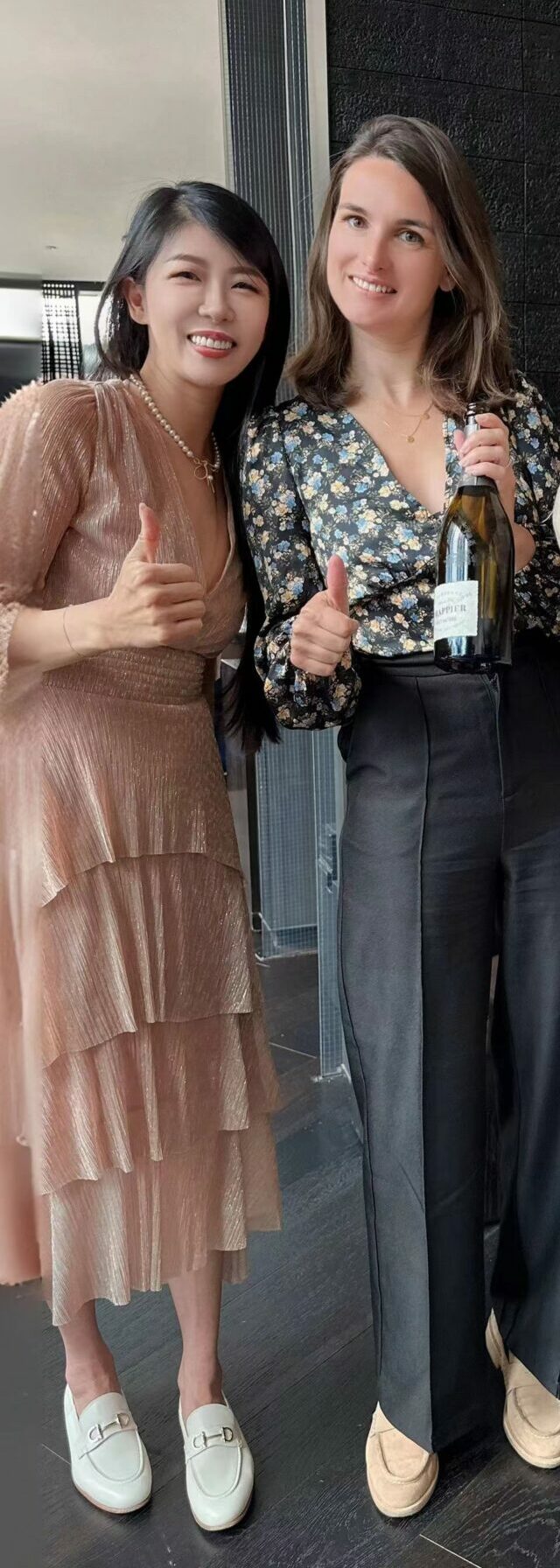

 English
English



